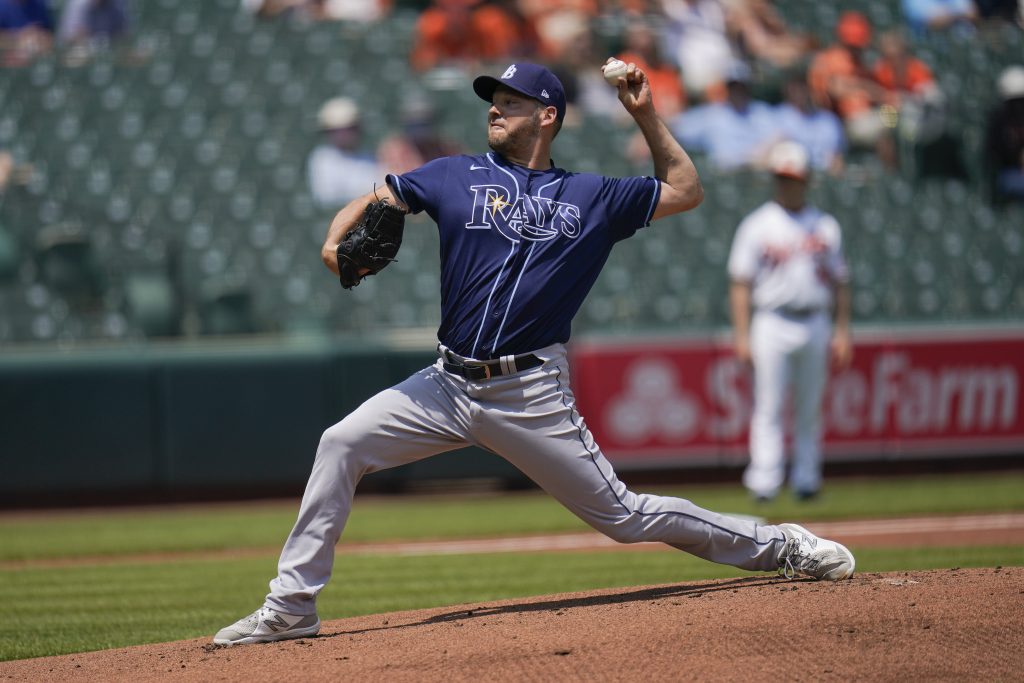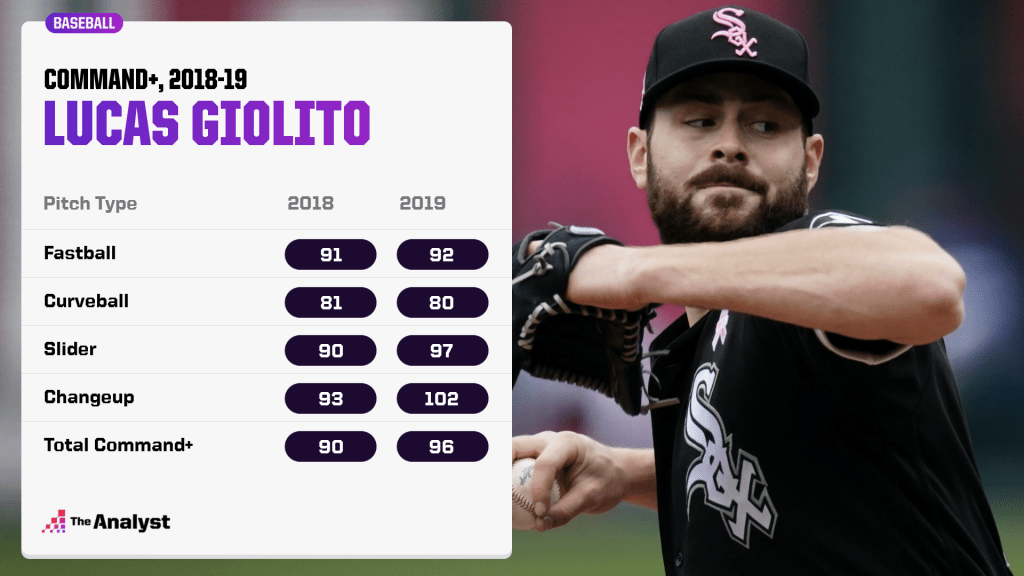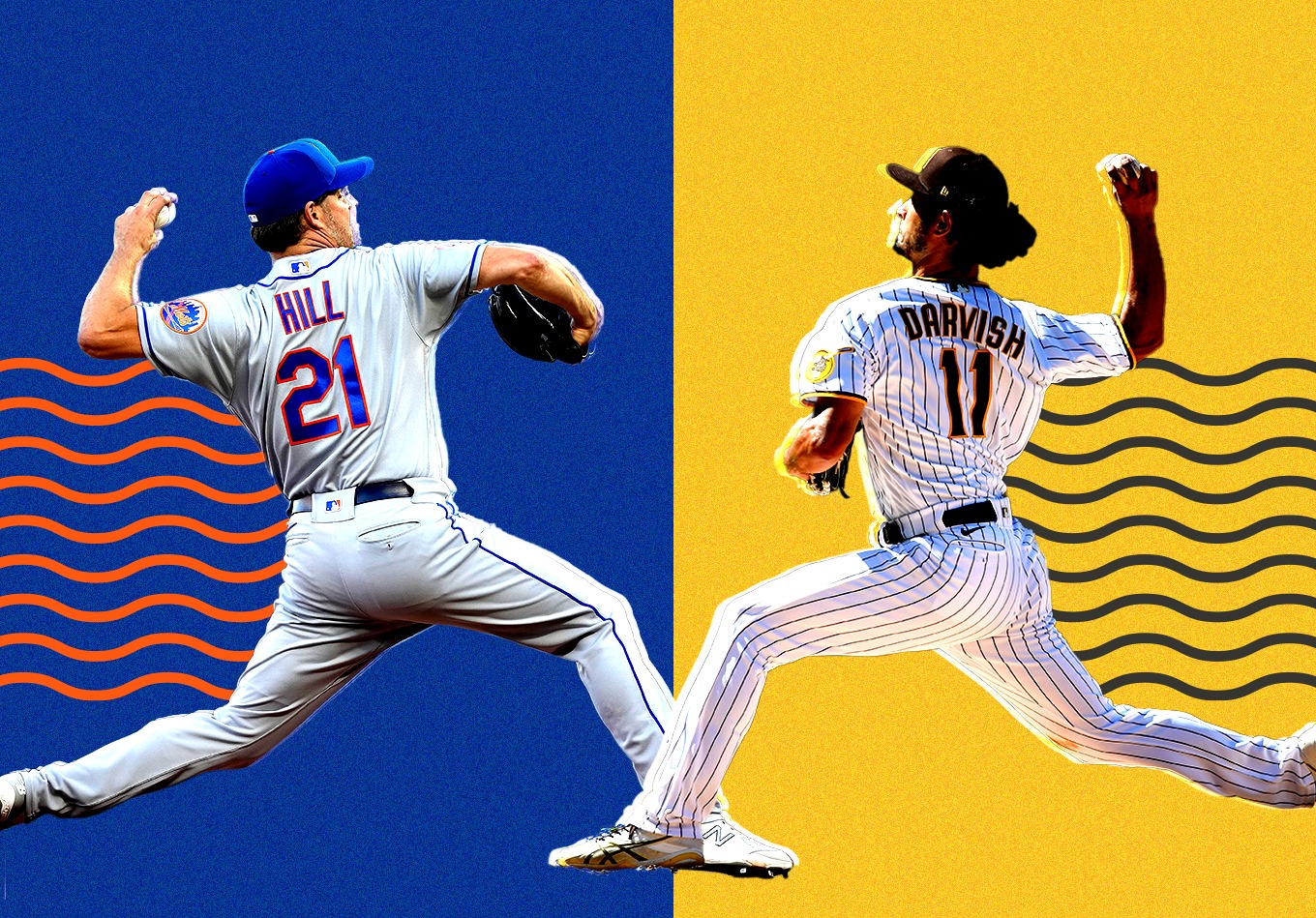For a look at which players are currently the best in the majors in command+, check out our metrics leaderboard.
Rewind it. Slow it down. Check the grip. Try to decode the catcher’s signs.
No doubt it’s a challenging task when a scout, coach or analyst is attempting to figure out which pitch of Yu Darvish’s extensive repertoire is coming next.
He throws three different fastballs and a slow cutter that looks very much like a traditional slider. But then, he also has two different sliders, two different curveballs, a changeup, splitter and something called – a Supreme?
Anyways, you get the picture. And the right-hander is just one of the aces that’s changing the way deliveries are being tracked because he’s not afraid to push the boundaries, get creative in the bullpen and blur the lines between pitch types.
As a result, command+ has had to change along with this new wave of pitchers. The metric has been adjusted to account for pitches like a cutter that might act more like a slider, a 12-to-6 curveball that’s more difficult to command than one with a shorter, more horizontal break and others that probably don’t belong in their current categories.
In other words, pitches are now clustered together by like types instead of being measured by one command grade for every slider, breaking ball, etc.
This improvement in command+ is necessary because now, more than ever, not every pitch in every pitch type is created equal. Some hurlers, like Darvish, are throwing two to four different varieties of pitches that fall within each type. And all those variations certainly shouldn’t be measured against the same expected command data for that one pitch type and clusters that are more difficult to command should be graded higher.
For example, Rich Hill will now receive more of a positive value for commanding his big, loopy 10-to-4 curve than left-hander Andrew Heaney on his breaking ball, which has a shorter, three-inch glove-side drop that’s much easier to command. And according to the data, changeups and splitters with very little arm-side movement and very little backspin are more difficult to command than the other offseason pitches.

In order to properly measure this, a machine-learning algorithm or AI is put to work to generate the expected command for the pitches in these clustered categories. Otherwise, the basics of command+ remain: Every pitch is analyzed to determine actual intent, starting with the count, pitch-type, the pitcher’s trends and the catcher’s mitt location and body position during his setup.
Several other factors are also weighed in, including things like the batter at the plate and the game situation. As a whole, this data allows analysts to make a distinction between pitchers who are throwing balls because they are struggling with command and those who are purposefully missing the plate in an effort to get hitters out.
“(Command+) answers a question that you would never be able to answer with traditional metrics,” veteran baseball analytics writer Eno Sarris said. “It requires an ability to code what’s happening in every game and turn basically a bunch of research behind the game to tell you, ‘Did that pitcher do exactly what he wanted to with that ball?’ That’s an extremely difficult question to answer.
“It’s something that most analysts have stepped away from because they can say, ‘I can’t be in the pitcher’s head.’ They took a question they thought nobody could answer and tried a different approach with it, and really tried to get into the pitcher’s head and try to give him credit for shaping a curveball. It might be a ball, but it might be the shape that he wanted and in the general location he wanted – which I think is the true definition of command.”
To essentially answer the scouting question about which pitchers have the best command, the data compiled is compared with the results of the now clustered pitches to extrapolate the command of every big-league pitcher with the league average still set at 100.
In general, command+ can provide a more accurate assessment of how a pitcher’s command is improving or trending in the wrong direction for each pitch in his arsenal.
Lucas Giolito is a prime example. He went from being one of the worst pitchers in the big leagues in 2018 to finishing with a 14-9 record, a 3.41 ERA and 228 strikeouts in 2019. As shown below, much of Giolito’s improvement can be attributed to his improved command.

He commanded his slider and changeup particularly well in 2019, improving 7% and 9%, respectively, relative to the league average. His emergence led to a sixth-place finish in the AL Cy Young Award voting that year.
Giolito’s command+ numbers aren’t impacted much by the adjustment because his pitches are all fairly typical for their type, but the new calculation can reveal which hurlers are the outliers in terms of harnessing an arsenal that’s more difficult to command than the average pitcher.
Largest Command+ Improvement With New AI Model
| Pitcher | Old Command+ | New Command+ | Improvement |
|---|---|---|---|
| Yu Darvish | 95.7 | 101.4 | 5.7 |
| Huascar Ynoa | 99.0 | 103.5 | 4.6 |
| Logan Webb | 96.1 | 100.2 | 4.1 |
| Trevor Bauer | 92.7 | 96.5 | 3.8 |
| Freddy Peralta | 100.8 | 102.9 | 2.1 |
| Dylan Cease | 92.0 | 93.7 | 1.7 |
| Walker Buehler | 103.3 | 105.0 | 1.7 |
| Tyler Glasnow | 87.4 | 89.0 | 1.6 |
| John Means | 113.6 | 114.9 | 1.3 |
| Cristian Javier | 88.8 | 90.1 | 1.3 |
The previously mentioned Darvish had his command+ jump from 95.7 to 101.4 when factoring in the adjustment. Darvish’s cutter might be more comparable to a maximum-velocity slider, while his frisbee slider, which has very little vertical movement but a ton of horizontal break, is much different than a traditional slider with a two-plane break.
Promising right-hander Huascar Ynoa has also benefitted. That’s because his “slider” – which accounts for roughly half of his pitches – has a ton of drop to it and really behaves more like a curveball.
Pitchers are throwing harder than ever, with more spin rate than ever, and the days of cookie-cutter fastballs, sliders, curveballs and changeups are over. Some metrics are going to have to be fine-tuned accordingly, and command+ has taken a step in that direction.
The Athletic wrote about command+ back when we first introduced it in 2018.
Enjoy this? Subscribe to our mailing list to receive exclusive weekly content.
